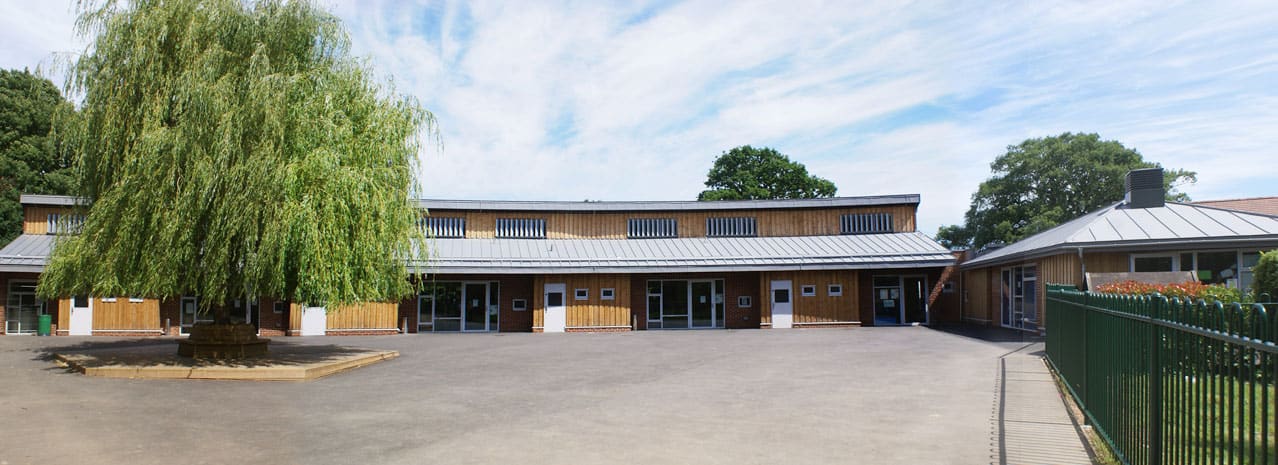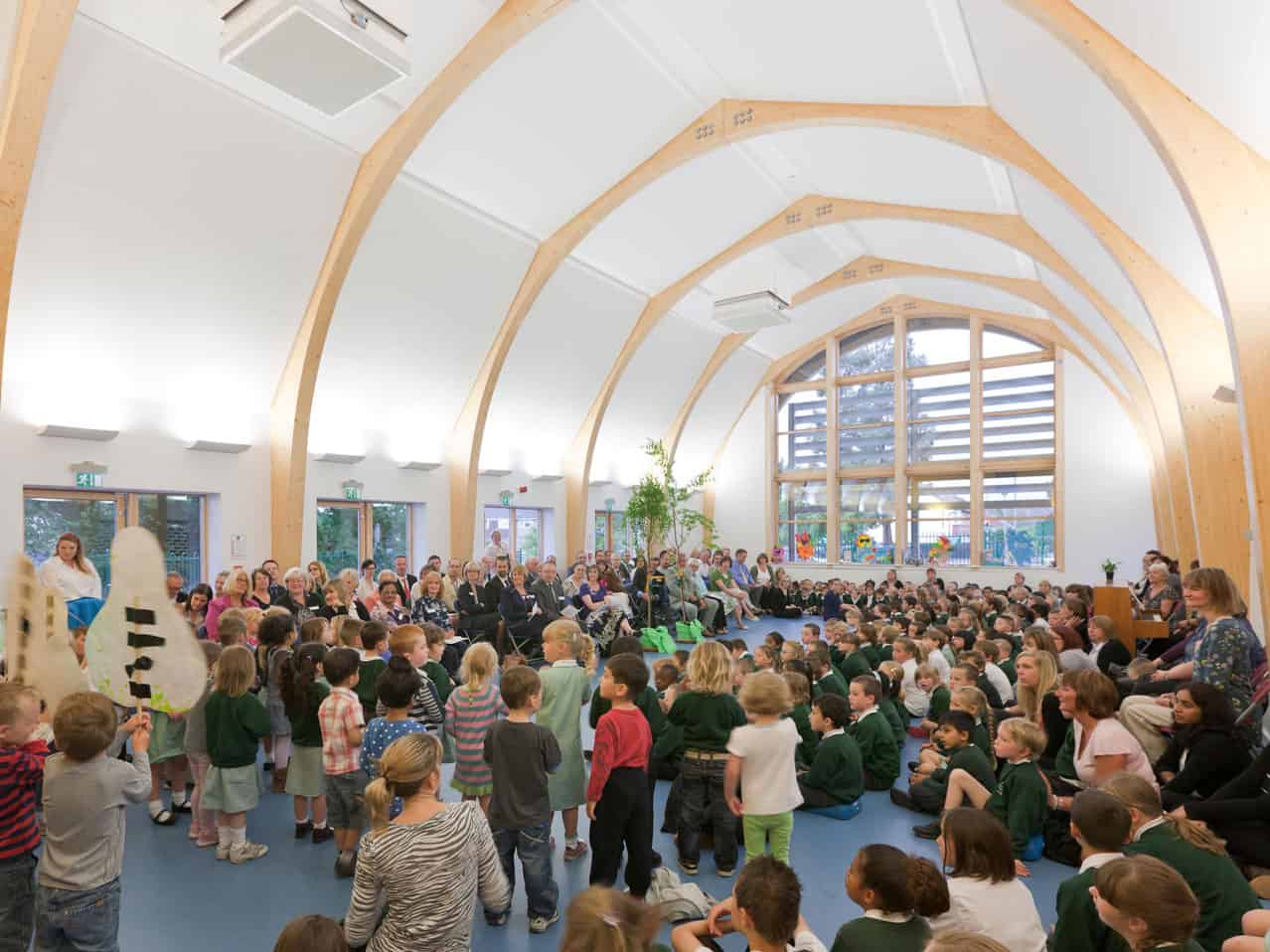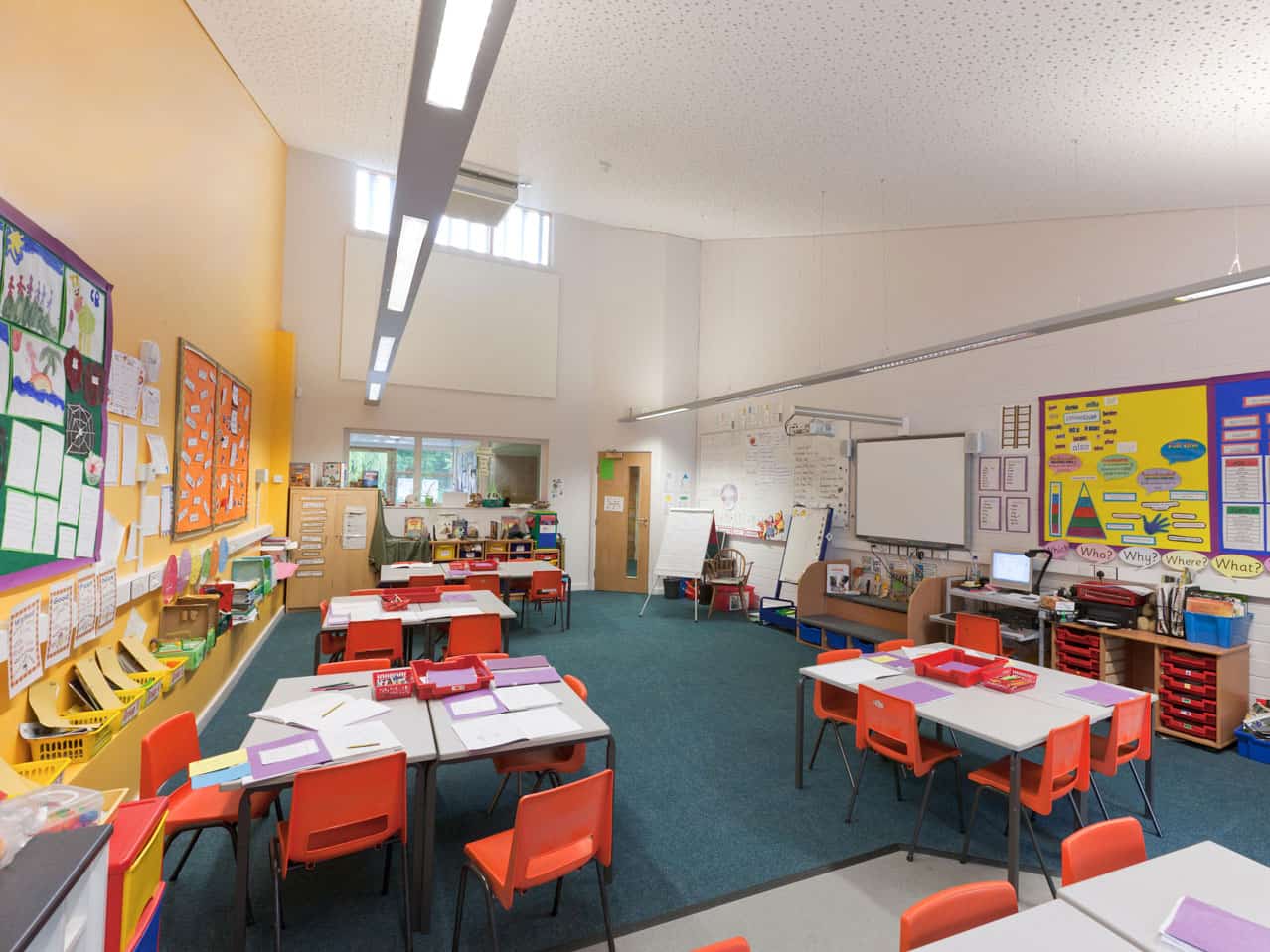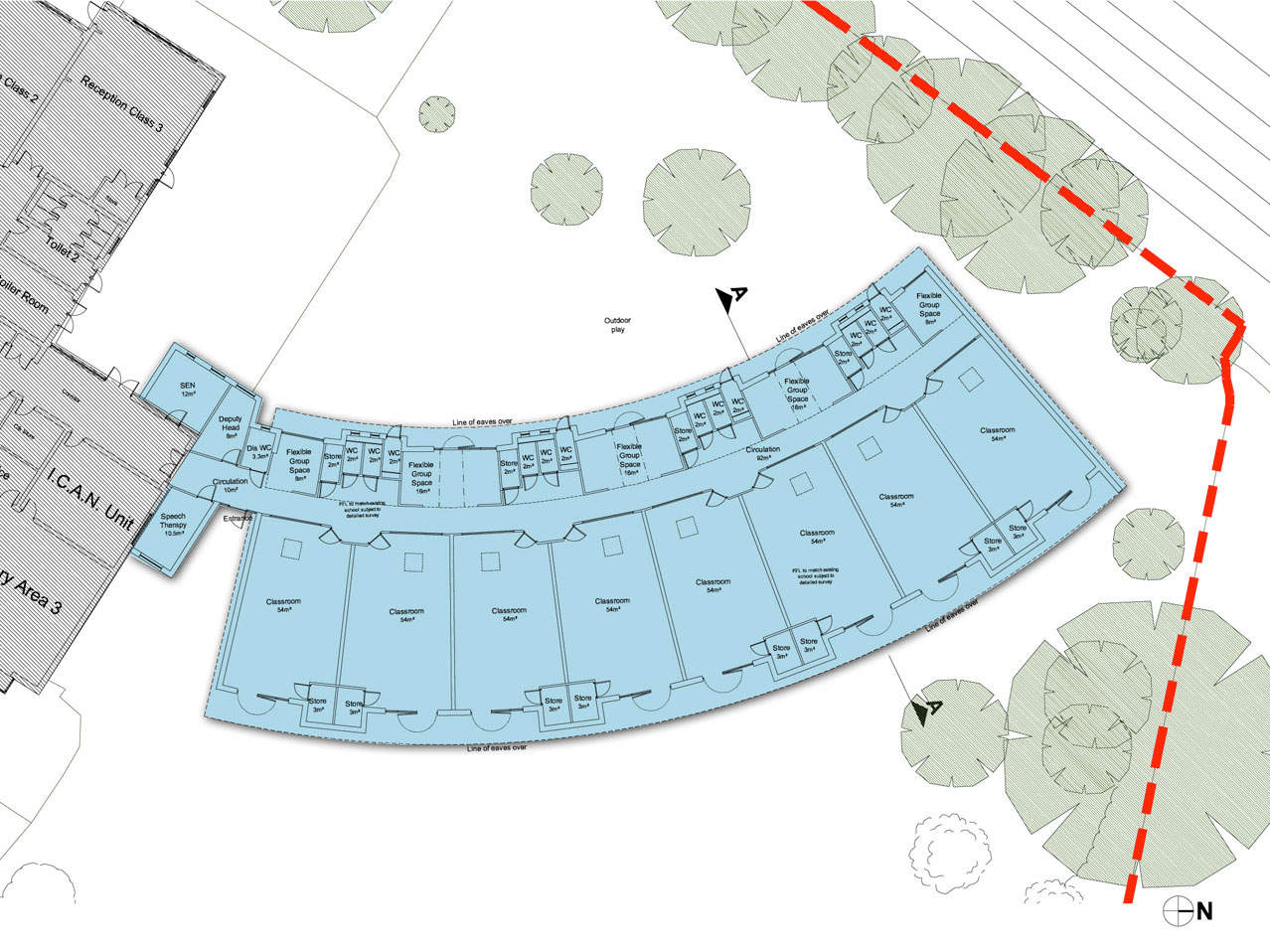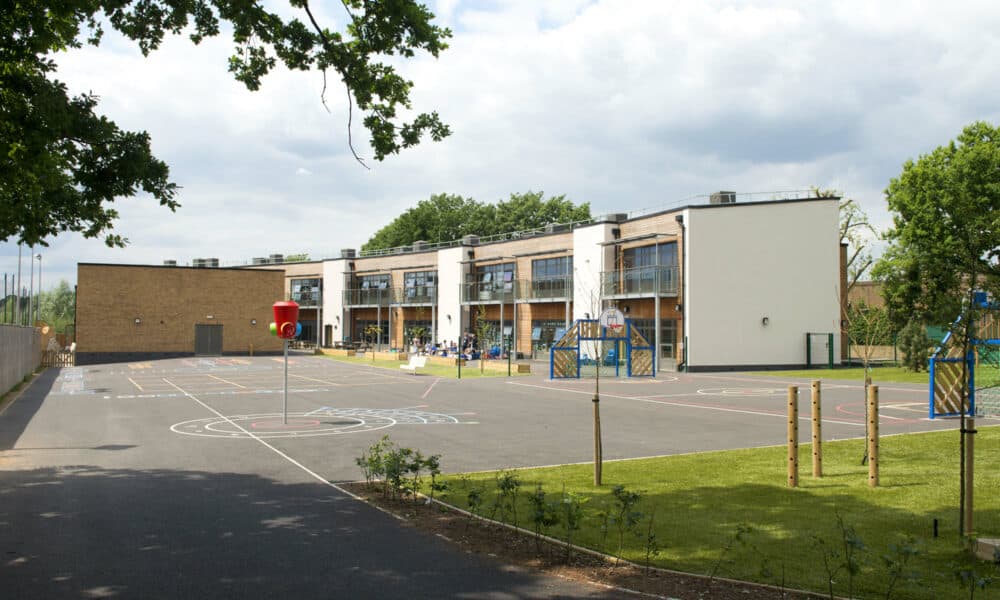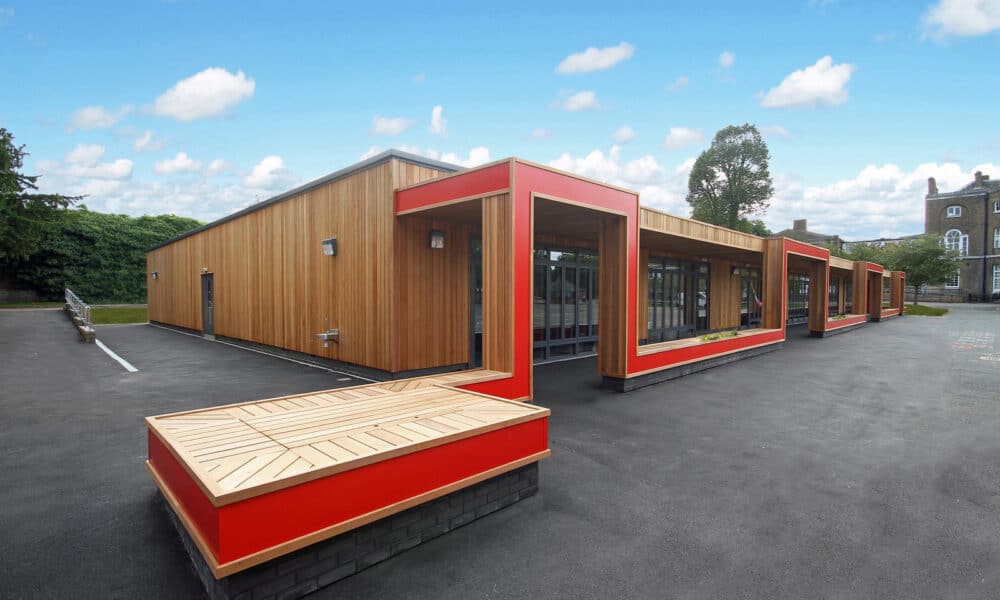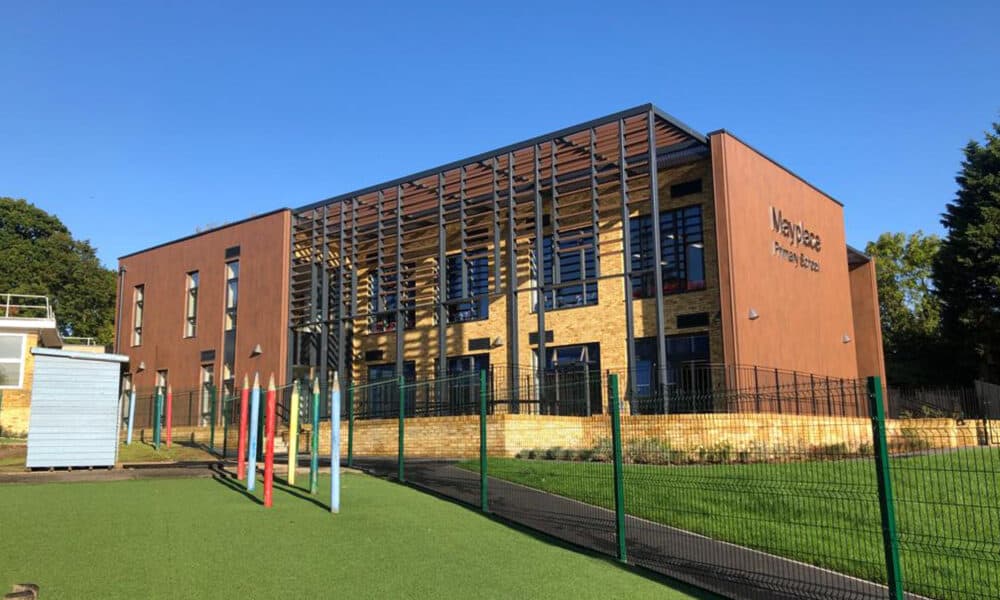Castle Hill Primary School
Kingston
ECD worked with Castle Hill Primary School and the Council to deliver the expansion of the school to create a 2FE all-through primary school. The extension & refurbishment of the School was required due to its integration of a closing Junior school.
Location: Kingston
Client: Royal Borough of Kingston
Project Value: £2.65m
Specialisation: Extension to existing school
To accommodate the new influx of students on the premises, the expansion of the school was developed in two phases consisting of two new additions as well as minor refurbishment works to the existing facilities. The first phase, a new extension at the northern end of the site, provides accommodation for KS2 pupils including the following:
- 8 new classrooms to replace the temporary accommodation currently in;
- A new library and ICT suite;
- A SENCO office and space for a Speech and Language Specialist;
- Improved staff and pupil toilets; and
- Additional playground space.
The second phase, the new hall, provides:
- A new kitchen and dining hall;
- Deputy Head’s office;
- Family liaison room; and
- Extended schools/community space.
There were a number of unique aspects of the scheme which had to be resolved throughout the design and delivery process through regular and focused consultation with the school, the end users, residents and client representatives. These included:
- Working within a confined site, immediately adjacent to an occupied school;
- Proximity to a railway, and neighbouring residential/retail property;
- Existing Temporary School Village located (by others) within the ideal location for permanent school development;
- Requirement for a land-swap for planning purposes to enable school development;
- High Water table;
- High Levels of SEN requirements for completed school;
- Schools aspirations for integrated internal/external teaching space;
In order to achieve the necessary level of consultation, we established the following meeting structures:
• a series of Core Group Meetings (consisting of Royal Borough of Kingston, the school Head Teacher, the Bursar and parent Governors) to discuss the various design options
• a school competition with pupils asked to create a design and explain their inspiration (the three best designs selected by the School received a book tokens)
• a publicly advertised exhibition consultation event held at the school to discuss scheme proposals and gain feedback on initial designs. School children’s parents were invited as well as residents and businesses within the local community.
Discussions were also held with Building Control and Planning Officer to assess their requirements for the scheme, discuss a “land-swap” within the school grounds to enable the development of its east end and ensure Planning Submissions went smoothly. Once on-site, the consultation process involved:
- School Assembly session for pupils (and staff) to meet the contractor, as well as the CDM Coordinator Phil Peters, and a discussion of Health & Safety around construction sites
- Regular meetings with the School Representative and Borough to provide project construction updates and discuss issues or concerns they feel are important.
- The best location determined for the classroom block from an educational aspect, however, was identified as being located at the end of the existing school building, close to the railway line, thus potentially creating acoustic problems. We satisfactorily resolved this issue with several measures:
- The building is orientated so that noise-sensitive classrooms face north and north-east away from the railway line (and away from midday and afternoon sun & glare). Between the classrooms and the railway we placed acoustic buffer zones of a corridor and then toilets, stores and group study spaces.
- The classrooms are naturally-ventilated using roof-mounted passive stack ventilators that are controlled by CO2 sensors in each room. These ventilators had additional acoustic linings fitted to further reduce any external noise from the trains. The building is constructed from heavyweight materials with thick insulation, i.e. brick & blockwork cavity walls with a heavily insulated zinc roof.

